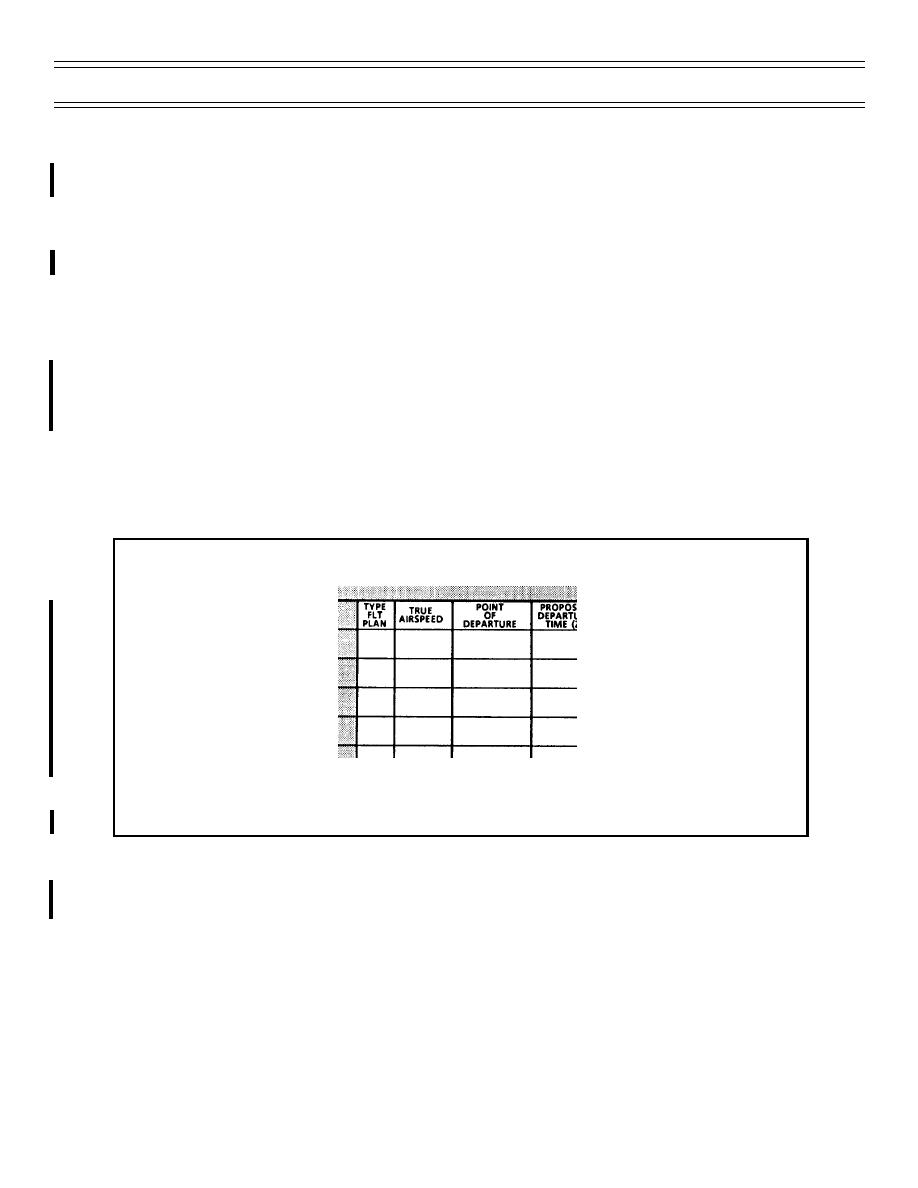
T-45A UJPT & E2-C2 INav-10
Flight Planning (En Route)
ITEM 4 - Enter “I” for instrument flight rules (IFR) in TYPE FLT PLAN. DOD FLIP General Planning (GP),
Chapter 4, provides the other codes, “V” (VFR) and “D” (DVFR).
NOTE: Do not combine IFR and VFR route segments on the same line.
ITEM 5 - Enter your TAS at initial cruising altitude. This figure is in the TAS block of your completed
single-engine jet flight log, but was determined from NATOPS. (TAS is not required for VFR flights.)
If you intend to change TAS on subsequent legs of the flight, you must notify ATC while airborne, but you
will make only one entry on the DD Form 175.
ITEM 6 - Enter the location identifier for the POINT OF DEPARTURE (departure airport) or the point
(NAVAID or fix) where IFR begins. Enter the installation name if there is no location identifier. For a
location identifier with four letters (an international identifier), use only the last three letters, i.e., Meridian
NAS (KNMM) will be “NMM.” You can find this information in the ROUTE/TO block of your completed
single-engine jet flight log.
Figure 5 is an example of completed TYPE FLT PLAN, TRUE AIRSPEED, and POINT OF DEPARTURE
blocks.
I
335
NBG
Figure 5: DD-175 SECTION II -
TYPE FLT PLAN, TRUE AIRSPEED, AND POINT OF DEPARTURE
ITEM 7 - Enter your PROPOSED DEPARTURE TIME (Z) in Coordinated Universal Time (UTC), known as
Zulu time. Allow sufficient time (at least 30 minutes) for ATC to process your flight plan.
For activation of an airborne segment (after an enroute delay), enter the proposed time for beginning that
segment in Zulu time.
(6-99) Original
Page 10-6



 Previous Page
Previous Page
